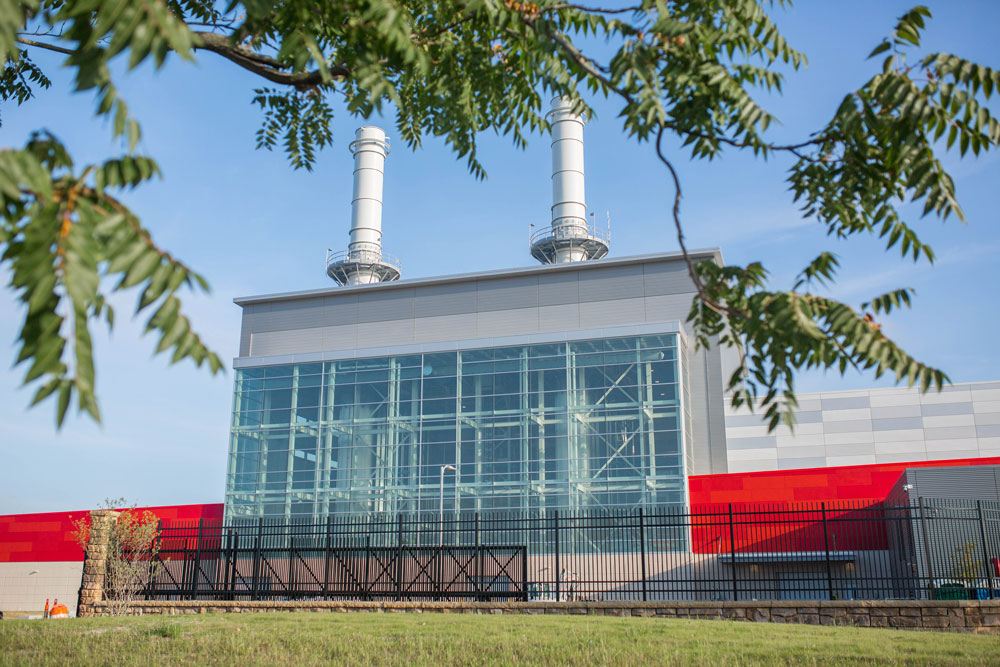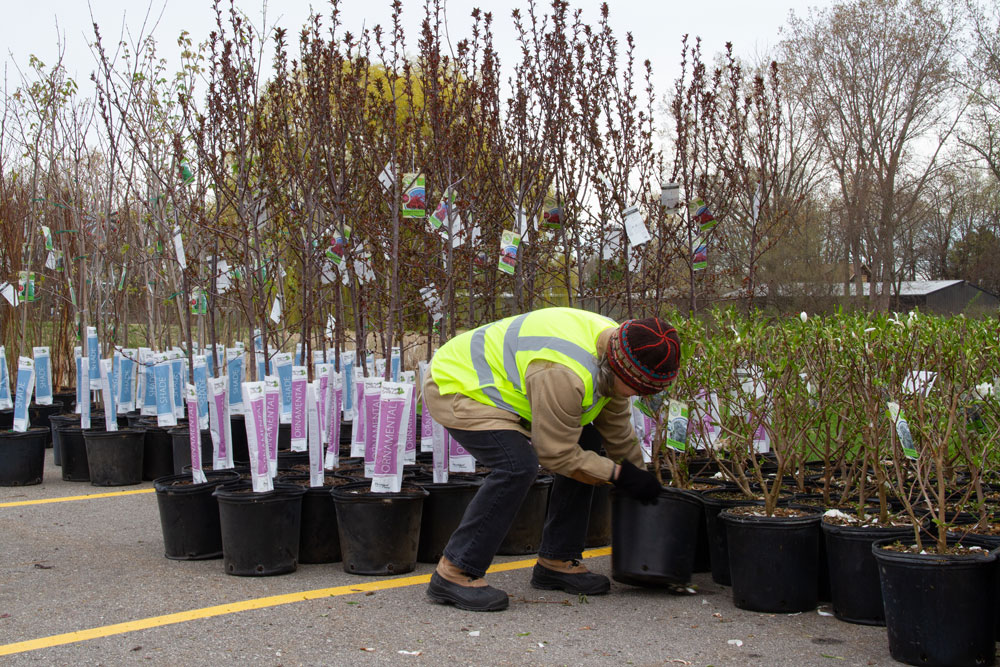Accelerating Efficiency
Re-investing into the community through infrastructure projects.

Holland Energy Park
Makes Strides toward
Community Energy Goals
Holland Board of Public Works made significant strides towards community energy goals by replacing local coal energy production from James DeYoung with natural gas production from Holland Energy Park. 2018 marked the first full year that HEP operated in full swing.
“Holland Energy Park’s first full year of production had commendable results. We are now able to produce more energy with less than half of the CO₂ emissions per megawatt hour that occurred with James DeYoung,” Joel Davenport, operations director.
The City of Holland created the Community Energy Plan in collaboration with Holland Board of Public Works. It states “there is a clear desire to have an energy strategy that attracts investors, businesses and residents through an increasingly cost effective, reliable, clean energy supply.” The plan also provides a framework of goals for the community to reduce CO₂ equivalent greenhouse gas emissions per capita over time.

Comparing CO₂ Emissions
James DeYoung Power Plant
Dates Jan 1 – Dec 31, 2010
__________
1.3 Metric Tons
CO₂ /MWHr
Holland Energy Park
Jan 1 – Dec 31, 2018
__________
0.4 Metric Tons
CO₂ /MWHr

Holland’s Energy-Saving
Trees Program Sparks
Community Support for
Tree Planting
Holland Board of Public Works (HBPW) partnered with the City of Holland to provide the first-in-Michigan Energy-Saving Trees (EST) Program this past April. Developed by the Arbor Day Foundation, EST educates homeowners on the benefits of strategic tree planting for energy savings. The online mapping tool allows individuals to see their property and utility lines, select a species, position it, and learn if it is in an optimal spot. HBPW electric customers planted 300 trees in strategic locations in yards across the Holland community to save energy and lower utility bills.
The program proved to be very successful with 90% of surveyed participants likely to recommend the program to a friend or colleague. Participants were pleased with the ease of selecting their tree species and placement in their yards using the online tool. Reasons that participants would recommend the program included the excellent health of the trees provided, how easy the planting instructions were to follow, increased energy efficiency in the long-term, helping the environment, beautifying landscapes, and benefiting the Holland community overall.
In addition to recommending the program, over 95% of surveyed participants reported that their tree is healthy and growing, or else leafy and starting to grow. Participants found the online tool informative across aspects including avoiding overhead utility lines, avoiding underground utility lines, planting in a location that reduces energy consumption, learning about the benefits that trees provide including energy savings, stormwater filtration, air pollution absorption, and carbon sequestration.
When asked about overall experience, 50% of participants expressed that they now have a more positive view about planting trees, and over 70% felt that they made their community a better place by planting a tree. The City of Holland’s tree canopy goal is 36%, and is currently at 24%. Private property plantings have been, and will continue to be, vital in reaching this goal. Participating in Energy-Saving Trees is a way that citizens can help. HBPW and the City of Holland plan to run the program in 2020, so be sure to check the HBPW website in February to reserve your tree!


Strategic Energy Management Goes Beyond the Basics of Energy Savings
Holland Board of Public Works partnered with Semco Energy and CLEAResult to host a Strategic Energy Management (SEM) pilot program that benefitted local companies. SEM is an energy management program that teaches businesses how to improve energy efficiency in ways that go beyond the basics of energy savings. Seven local businesses participated in the program.
HBPW energy efficiency engineer Barry Rutherford said, “Our goal was to make the greatest impact, so we invited customers who use higher amounts of electricity to participate in the SEM pilot. We thank Adient, GNS America, Haworth, Hope College, Magna Mirror, Magna Engineered Glass and Transmatic for taking the journey with us.”
The pilot program involved three different activities. SEM leaders conducted on-site evaluations and provided custom energy management plans. The plans were tailored for each participant and provided suggestions for reducing energy use. There was also a series of collaborative workshops. Participating organizations gathered together for four educational workshops that were part lecture and part interactive problem-solving. Each participant also had monthly calls with the SEM leaders to discuss plan progress.
The program utilizes a statistical energy model that normalizes for weather and production practices. The model gives participants clear insight about the energy saving practices that were adopted. Savings in energy consumption can be seen and measured despite variables like temperature or production output.
The SEM Program concluded with proven energy savings. One customer was running a shift on Saturdays. The energy evaluation revealed that significant savings would be realized by moving the Saturday shift to a weekday. They discovered that running the shift after hours on a weekday was more energy efficient.
Another customer was able achieve energy savings by implementing a policy for turning off equipment when it is not in use. Employees left fans running over the weekend. Simply asking employees to turn the fans off when they leave on Fridays made an impact on the company’s energy consumption.
The results of the SEM pilot are encouraging. Holland Board of Public Works will explore running the program in the future.
